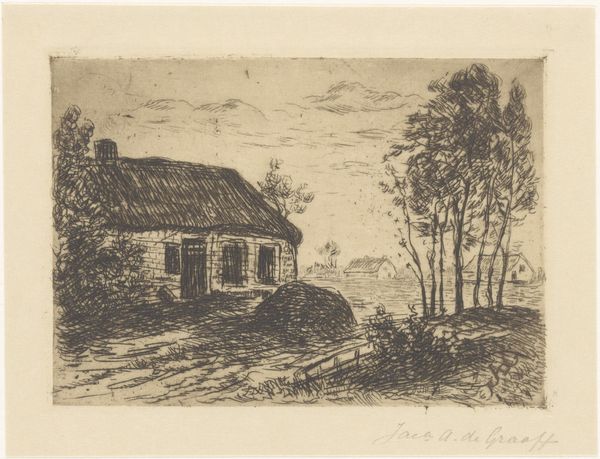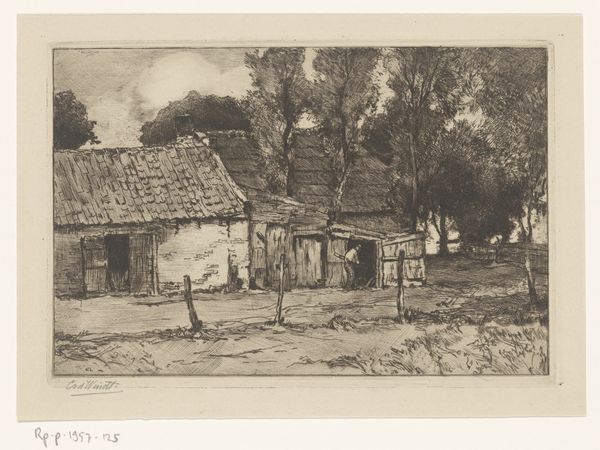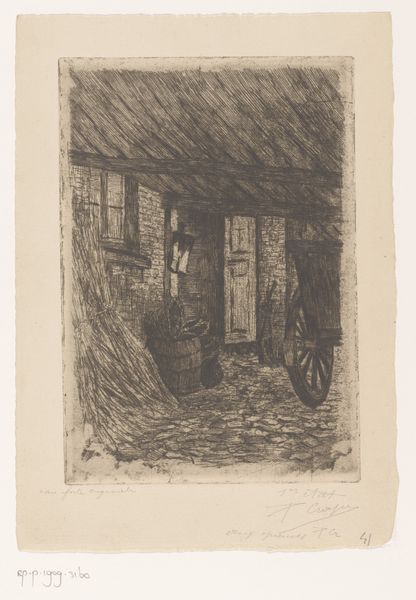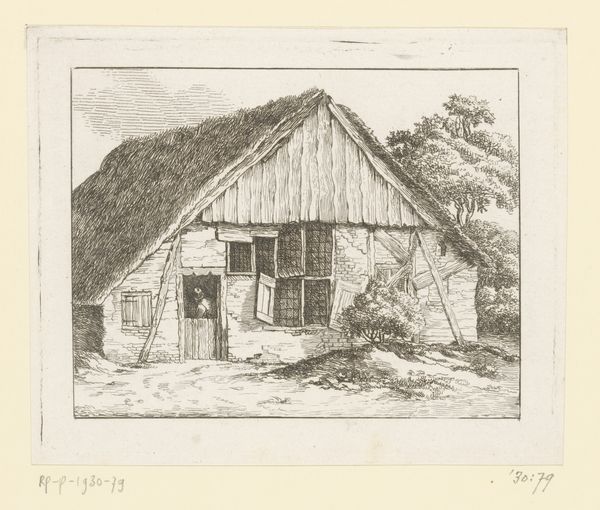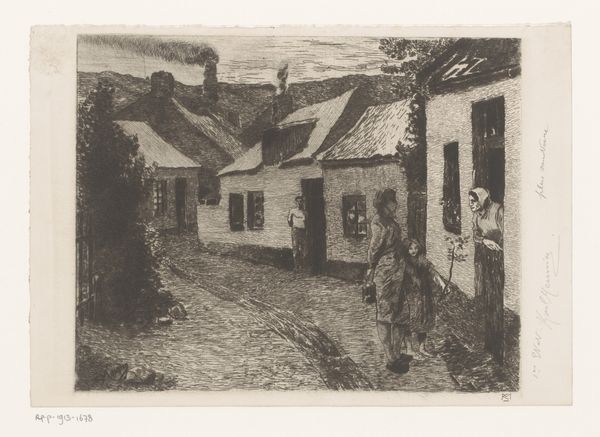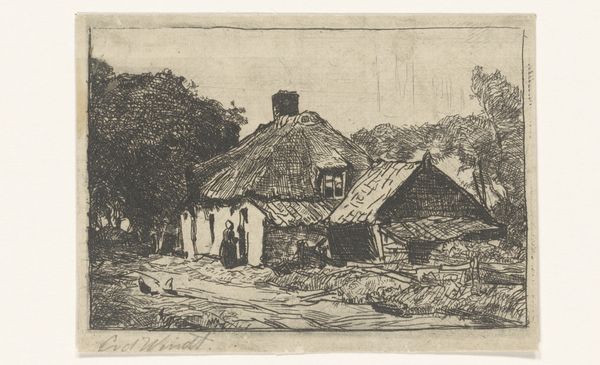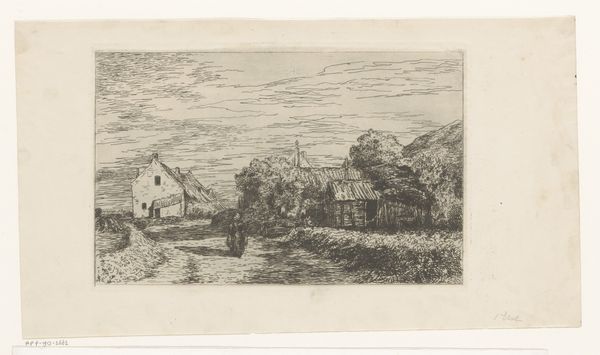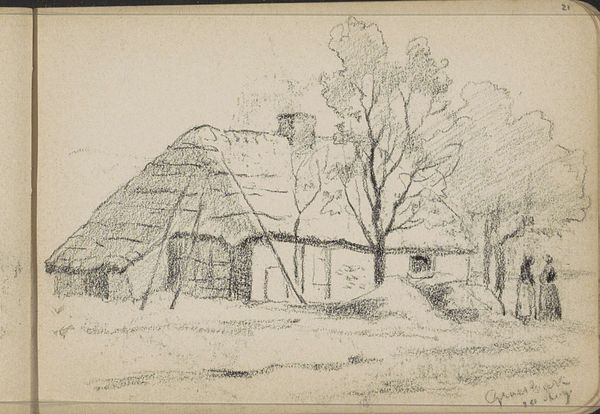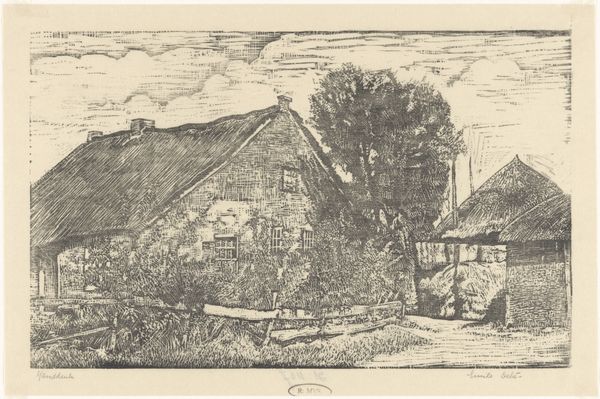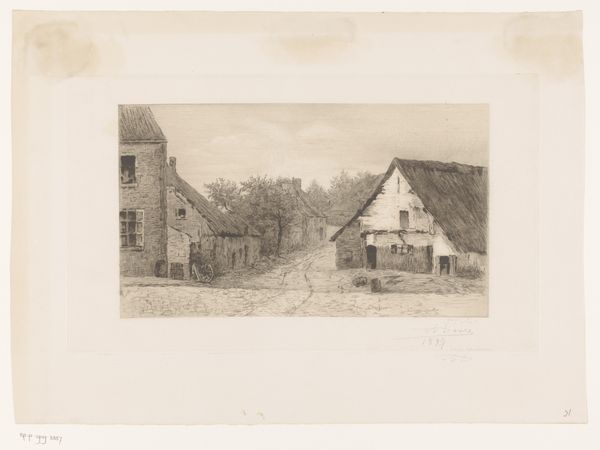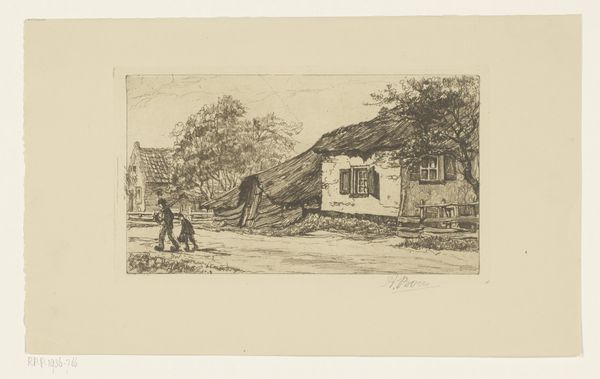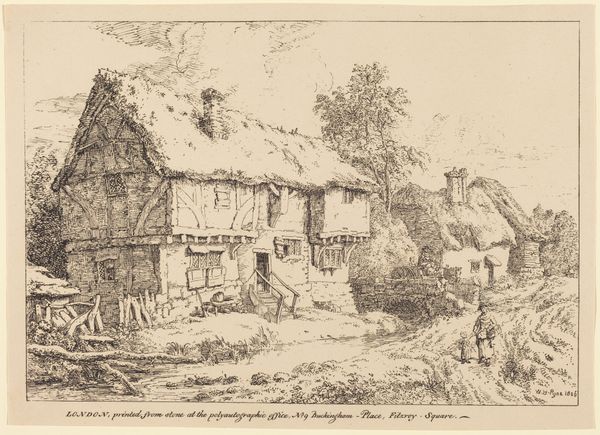
drawing, print, etching
#
pencil drawn
#
drawing
# print
#
etching
#
pencil sketch
#
landscape
Dimensions: height 110 mm, width 151 mm
Copyright: Rijks Museum: Open Domain
Editor: So this etching, "Zijgevel van een boerderij," or "Side of a Farmhouse," is attributed to Hermanus Josephus Wolff, and its dating is rather broad, 1886 to 1934. It has this really calm, quiet feeling to it. What do you see in it? Curator: The deliberate rendering of a humble, rural scene invites us to consider the romanticized vision of agrarian life often contrasted with the burgeoning industrial era. Think about who had access to idyllic imagery like this during this time. Who was being excluded? Editor: I hadn't thought about that. It seems simple, but what you're saying makes me think about social class and the rise of industrialization. How did people perceive the countryside? Curator: Exactly. The farmhouse isn't just a building, but also an ideal. And ideals can be potent tools for either social critique or the reinforcement of existing power structures. This work reminds us that romanticizing the rural idyll can mask the realities of labor and land ownership. How does the technique, the etching itself, play into this conversation? Editor: It makes me think of the labor involved, compared to, say, a photograph. An etching seems to have more handmade intimacy to it, maybe? Curator: Yes, there is labor. Also, consider the relative inexpensiveness of printed images; could this etching potentially reach wider audiences than, say, a painting? Could Wolff be engaging in a democratizing gesture? Editor: Interesting! So, on the one hand it could be a simple landscape. But on the other, it encourages us to look at the wider politics around it, especially how social class shapes it. Thanks, I will carry that thought process as I view art in the future. Curator: And consider the dialogue between that historical context and our own, where anxieties about urban life persist, prompting a continued revisiting, and often a reimagining, of these very landscapes.
Comments
No comments
Be the first to comment and join the conversation on the ultimate creative platform.
